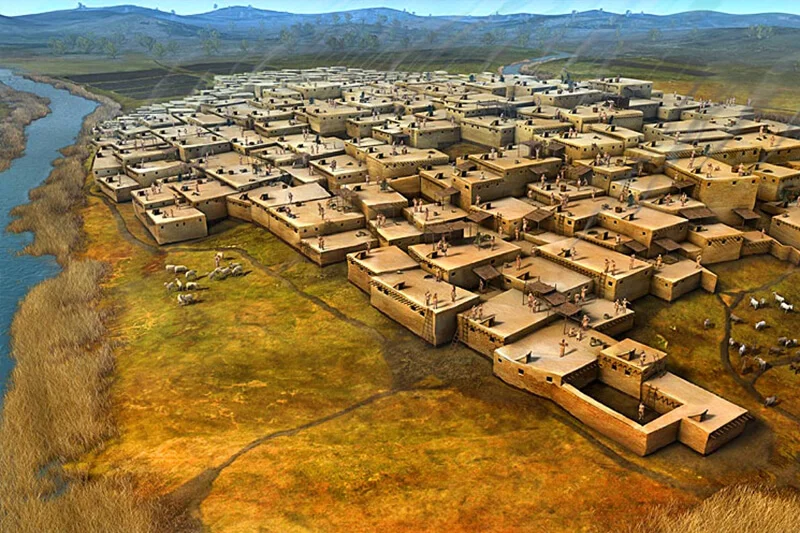Çatalhöyük is an archaeological site located in central Anatolia, Turkey. It is one of the most important Neolithic settlements in the world and provides valuable insights into the early stages of human civilization.
Çatalhöyük was inhabited from approximately 7500 BCE to 5700 BCE, during the Neolithic period. It is considered one of the earliest known urban settlements, providing evidence of early agricultural practices, domestication of animals, and the transition from hunter-gatherer societies to settled communities.
The site of Çatalhöyük covers a large area and is composed of multiple layers of buildings. The buildings were constructed with mud bricks and had flat roofs, and they were interconnected through a complex network of narrow streets and pathways. The absence of streets and entrances at ground level suggests that people accessed their homes through ladders and trapdoors.
Çatalhöyük is renowned for its extensive collection of wall paintings and artifacts. The wall paintings depict various scenes of daily life, including hunting, farming, and religious rituals. The site has also yielded a wide range of artifacts, including pottery, figurines, tools, and jewelry, providing valuable insights into the cultural practices and artistic expressions of the Neolithic period.
Archaeological evidence suggests that Çatalhöyük had a complex belief system and engaged in ritual practices. The presence of shrines within the houses and the occurrence of burials beneath the floors indicate a strong connection between the living spaces and spiritual beliefs. Additionally, the presence of plastered skulls and figurines associated with the cult of the mother goddess has been discovered at the site. Çatalhöyük was inscribed as a UNESCO World Heritage Site in 2012. Its well-preserved archaeological remains and the insights gained from excavations have contributed significantly to our understanding of early human settlements, social organization, and cultural development.


Comment (0)